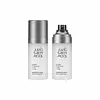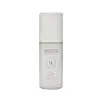What's inside
What's inside
 Key Ingredients
Key Ingredients

No key ingredients
 Benefits
Benefits

 Concerns
Concerns

 Ingredients Side-by-side
Ingredients Side-by-side

Onsen-Sui
Butylene Glycol
HumectantGlycerin
HumectantGlycereth-26
HumectantPropanediol
Solvent1,2-Hexanediol
Skin ConditioningPhenoxyethanol
PreservativePEG-60 Hydrogenated Castor Oil
EmulsifyingPolyglyceryl-2 Oleate
EmulsifyingDiphenyl Dimethicone
EmollientWater
Skin ConditioningTriethylhexanoin
MaskingHydrogenated Lecithin
EmulsifyingEthylhexylglycerin
Skin ConditioningParfum
MaskingSodium Citrate
BufferingDisodium EDTA
Citric Acid
BufferingOctyldodeceth-16
EmulsifyingHydrolyzed Pearl
Skin ConditioningPolyester-5
Saccharomyces Ferment
Skin ConditioningTillandsia Usneoides Extract
Skin ConditioningEthyl Hexanediol
SolventChamomilla Recutita Flower Water
MaskingOnsen-Sui, Butylene Glycol, Glycerin, Glycereth-26, Propanediol, 1,2-Hexanediol, Phenoxyethanol, PEG-60 Hydrogenated Castor Oil, Polyglyceryl-2 Oleate, Diphenyl Dimethicone, Water, Triethylhexanoin, Hydrogenated Lecithin, Ethylhexylglycerin, Parfum, Sodium Citrate, Disodium EDTA, Citric Acid, Octyldodeceth-16, Hydrolyzed Pearl, Polyester-5, Saccharomyces Ferment, Tillandsia Usneoides Extract, Ethyl Hexanediol, Chamomilla Recutita Flower Water
Water
Skin ConditioningBetula Platyphylla Japonica Juice
Skin ConditioningLavandula Angustifolia Flower Water
Skin ConditioningButylene Glycol
HumectantGlycerin
HumectantPropanediol
SolventGlycereth-26
HumectantPanthenol
Skin ConditioningEctoin
Skin ConditioningHydroxyacetophenone
AntioxidantHydrogenated Lecithin
EmulsifyingTocopherol
AntioxidantGlyceryl Caprylate
EmollientCaprylyl Glycol
EmollientEthylhexylglycerin
Skin ConditioningDiphenyl Dimethicone
EmollientTriethylhexanoin
MaskingDisodium EDTA
Chamaecyparis Obtusa Leaf Extract
Skin ConditioningSalix Alba Bark Extract
AstringentPolyglyceryl-10 Laurate
Skin ConditioningSodium Citrate
BufferingCitric Acid
BufferingPotassium Sorbate
PreservativeSodium Benzoate
MaskingWater, Betula Platyphylla Japonica Juice, Lavandula Angustifolia Flower Water, Butylene Glycol, Glycerin, Propanediol, Glycereth-26, Panthenol, Ectoin, Hydroxyacetophenone, Hydrogenated Lecithin, Tocopherol, Glyceryl Caprylate, Caprylyl Glycol, Ethylhexylglycerin, Diphenyl Dimethicone, Triethylhexanoin, Disodium EDTA, Chamaecyparis Obtusa Leaf Extract, Salix Alba Bark Extract, Polyglyceryl-10 Laurate, Sodium Citrate, Citric Acid, Potassium Sorbate, Sodium Benzoate
 Reviews
Reviews

Ingredients Explained
These ingredients are found in both products.
Ingredients higher up in an ingredient list are typically present in a larger amount.
Butylene Glycol (or BG) is used within cosmetic products for a few different reasons:
Overall, Butylene Glycol is a safe and well-rounded ingredient that works well with other ingredients.
Though this ingredient works well with most skin types, some people with sensitive skin may experience a reaction such as allergic rashes, closed comedones, or itchiness.
Learn more about Butylene GlycolCitric Acid is an alpha hydroxy acid (AHA) naturally found in citrus fruits like oranges, lemons, and limes.
Like other AHAs, citric acid can exfoliate skin by breaking down the bonds that hold dead skin cells together. This helps reveal smoother and brighter skin underneath.
However, this exfoliating effect only happens at high concentrations (20%) which can be hard to find in cosmetic products.
Due to this, citric acid is usually included in small amounts as a pH adjuster. This helps keep products slightly more acidic and compatible with skin's natural pH.
In skincare formulas, citric acid can:
While it can provide some skin benefits, research shows lactic acid and glycolic acid are generally more effective and less irritating exfoliants.
Most citric acid used in skincare today is made by fermenting sugars (usually from molasses). This synthetic version is identical to the natural citrus form but easier to stabilize and use in formulations.
Read more about some other popular AHA's here:
Learn more about Citric AcidDiphenyl Dimethicone is a type of silicone.
Disodium EDTA plays a role in making products more stable by aiding other preservatives.
It is a chelating agent, meaning it neutralizes metal ions that may be found in a product.
Disodium EDTA is a salt of edetic acid and is found to be safe in cosmetic ingredients.
Learn more about Disodium EDTAEthylhexylglycerin (we can't pronounce this either) is commonly used as a preservative and skin softener. It is derived from glyceryl.
You might see Ethylhexylglycerin often paired with other preservatives such as phenoxyethanol. Ethylhexylglycerin has been found to increase the effectiveness of these other preservatives.
Glycereth-26 is a synthetic ingredient and polyethylene glycol ether of Glycerin. Glycerin is already naturally found in your skin and helps keep your skin moisturized.
It is a humectant and helps add texture to products. It can make your product thicker.
As a humectant, it helps draw moisture from the air to your skin. This helps your skin stay hydrated.
Learn more about Glycereth-26Glycerin is already naturally found in your skin. It helps moisturize and protect your skin.
A study from 2016 found glycerin to be more effective as a humectant than AHAs and hyaluronic acid.
As a humectant, it helps the skin stay hydrated by pulling moisture to your skin. The low molecular weight of glycerin allows it to pull moisture into the deeper layers of your skin.
Hydrated skin improves your skin barrier; Your skin barrier helps protect against irritants and bacteria.
Glycerin has also been found to have antimicrobial and antiviral properties. Due to these properties, glycerin is often used in wound and burn treatments.
In cosmetics, glycerin is usually derived from plants such as soybean or palm. However, it can also be sourced from animals, such as tallow or animal fat.
This ingredient is organic, colorless, odorless, and non-toxic.
Glycerin is the name for this ingredient in American English. British English uses Glycerol/Glycerine.
Learn more about GlycerinHydrogenated Lecithin is created from the hydrogenation of lecithin (a group of phospholipids). Hydrogenation is a chemical reaction between hydrogen and another element.
This ingredient is an emollient and emulsifier. As an emollient, it helps soften skin by trapping moisture within. As an emulsifier, it prevents oil and water ingredients from separating.
Propanediol is an all-star ingredient. It softens, hydrates, and smooths the skin.
It’s often used to:
Propanediol is not likely to cause sensitivity and considered safe to use. It is derived from corn or petroleum with a clear color and no scent.
Learn more about PropanediolSodium Citrate is the sodium salts of citric acid. In skincare, it is used to alter pH levels and acts as a preservative.
Its main functions are to maintain the pH of a product and neutralize metal ions.
The acidity of our skin is maintained by our glands and skin biome; normal pH level of skin is slightly acidic (~4.75-5.5).
Being slightly acidic allows our skin to create an "acid mantle". This acid mantle is a thin barrier that protects our skin from bacteria and contaminants.
Learn more about Sodium CitrateTriethylhexanoin is created from glycerin and 2-ethylhexanoic acid. It is a solvent and emollient.
As a solvent, Triethylhexanoin helps dissolve ingredients to stable bases or help evenly distribute ingredients throughout the product.
It is also an emollient and helps condition the skin.
Learn more about TriethylhexanoinWater. It's the most common cosmetic ingredient of all. You'll usually see it at the top of ingredient lists, meaning that it makes up the largest part of the product.
So why is it so popular? Water most often acts as a solvent - this means that it helps dissolve other ingredients into the formulation.
You'll also recognize water as that liquid we all need to stay alive. If you see this, drink a glass of water. Stay hydrated!
Learn more about Water